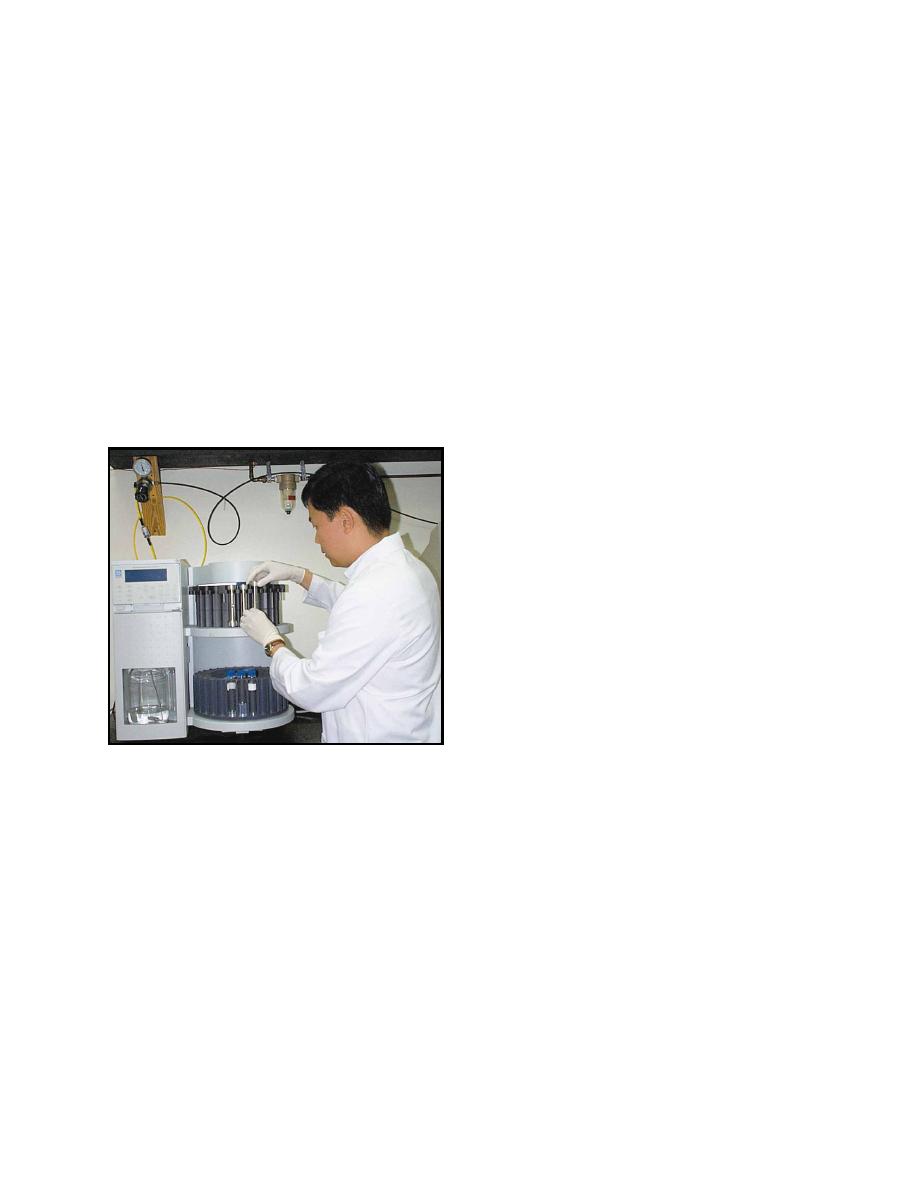 |
||
|
|
||
| |||||||||||||||
|
|
 ERDC TN-DOER-C10
March 2000
common application has been testing samples such as birds' eggs or the livers of fish for the
induction of detoxifying enzymes in response to environmental PCB, PAH, or PCDD/PCDF
exposure. Recently, cell-based assays have been used to test contaminated sediments. Hoke et al.
(1994) reported using H4IIE cells in a battery of biomarker tests on organic extracts of sediments.
Murk et al. (1996) also tested sediment extracts and found that a recombinant cell line (CALUX)
based on H4IIE and transfected with the firefly luciferase gene as a reporter gave improved results
over the wild-type H4IIE. The P450 Reporter Gene System (P450RGS) based on human HepG2
cells similarly uses the luciferase gene as a reporter. P450RGS has been used in several studies to
identify and measure PAHs and/or planar chlorinated hydrocarbons in sediment extracts (Anderson
et al. 1995, 1996; Anderson, Zeng, and Jones 1999; Kim et al. 1997; McFarland et al. 1999). In
McFarland et al. (1999), P450RGS was shown to have advantages for this purpose compared with
the wild-type rat hepatoma H4IIE cell line. The nonlabor costs incurred in testing the same number
of sediment samples were similar for the two assays, but P450RGS was considerably less time
consuming. Since the publication of McFarland et al. (1999), the P450RGS assay has been adapted
to a 96-well microtiter plate format, providing an even more rapid screening assay at lower cost.
Additional modifications to sample preparation
have also reduced the time and cost of sediment
extraction. Previously the sediment samples were
extracted according to U.S. Environmental Pro-
tection Agency (USEPA) Method 3540 (USEPA
1986) using Soxhlet apparatus. Sediment extrac-
tion was later accomplished with the more rapid
Dionex Accelerated Solvent Extraction (ASETM)
apparatus (Figure 1) using methods that complied
with USEPA Method 3545 (USEPA 1986) guide-
lines for soils and sediments. The extracts were
cleaned on sulfuric acid/silica gel (SA/SG) in a
separate step, then solvent exchanged to iso-oc-
tane for use in the cell-based assays. The latest
ASE method now combines the cleanup step with
Figure 1. Dionex accelerated solvent extraction
the extraction step.
system
MATERIALS AND METHODS: The ASE one-step extraction/cleanup procedure was performed
as described in McCant, Inouye, and McFarland (1999). The detailed laboratory protocols are
included as Appendix I. Briefly, a 33-mL extraction cell was packed with 2 g of neutral silica gel
followed by 8 g of SA/SG. The column was conditioned with hexane, after which a 2.5-g aliquot
of freeze-dried sediment thoroughly mixed with diatomaceous earth (DE) in a 4:1 weight-to-weight
ratio (sediment:DE) was added. The cell was then extracted on the Dionex ASE using the following
parameters: 1,500 psi, 100 C, with a static and heat time of 5 min, a flushing volume of 60 mL,
60-sec purging, and a 60 percent flushing volume for two cycles, using 10 percent dichloromethane
(DCM) in hexane. Clean extracts were concentrated to approximately 1 mL in a Zymark TurboVap
II and solvent exchanged to iso-octane (0.1 to 1.0 mL final volume). Extracted samples were stored
at -20 C until assayed.
2
|
|
Privacy Statement - Press Release - Copyright Information. - Contact Us - Support Integrated Publishing |